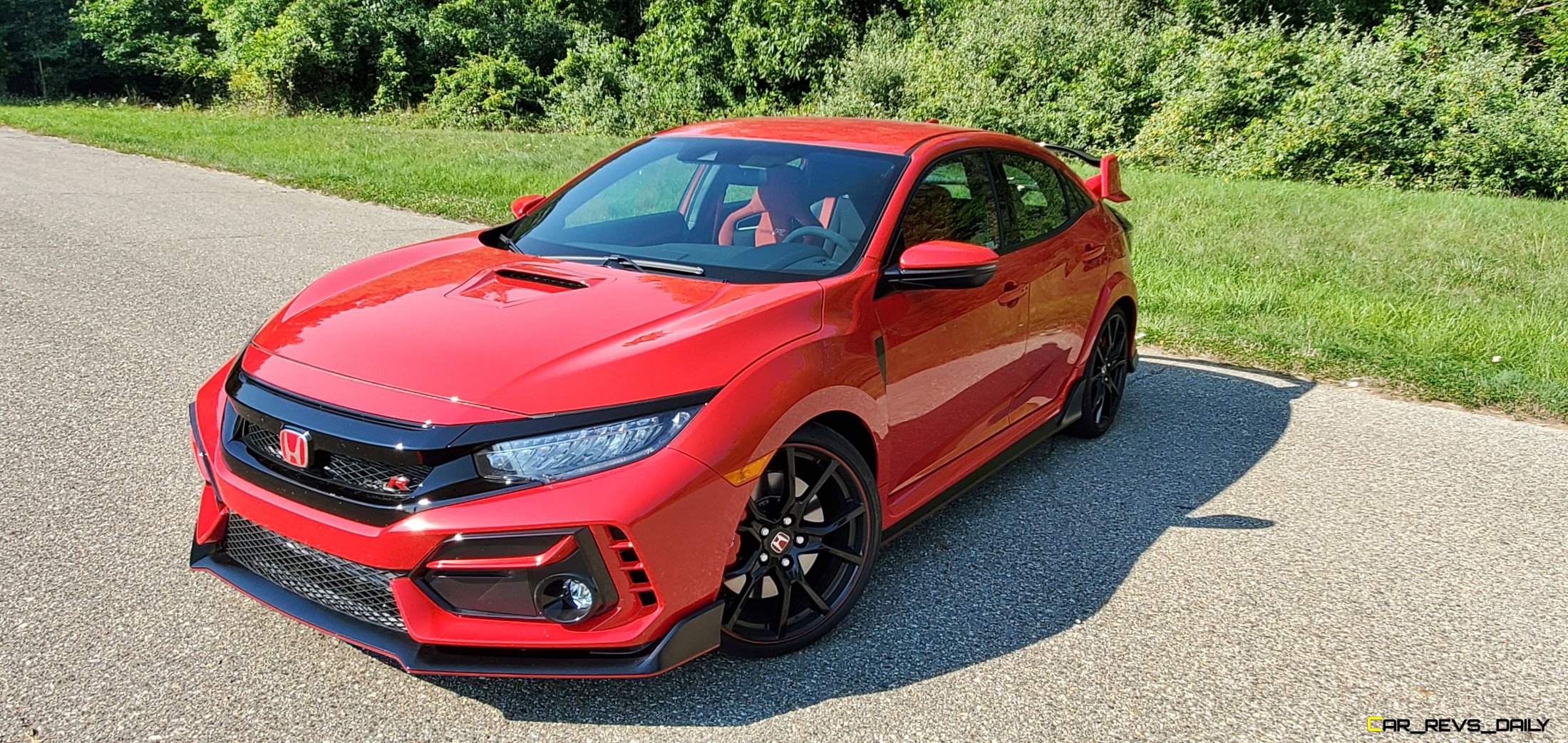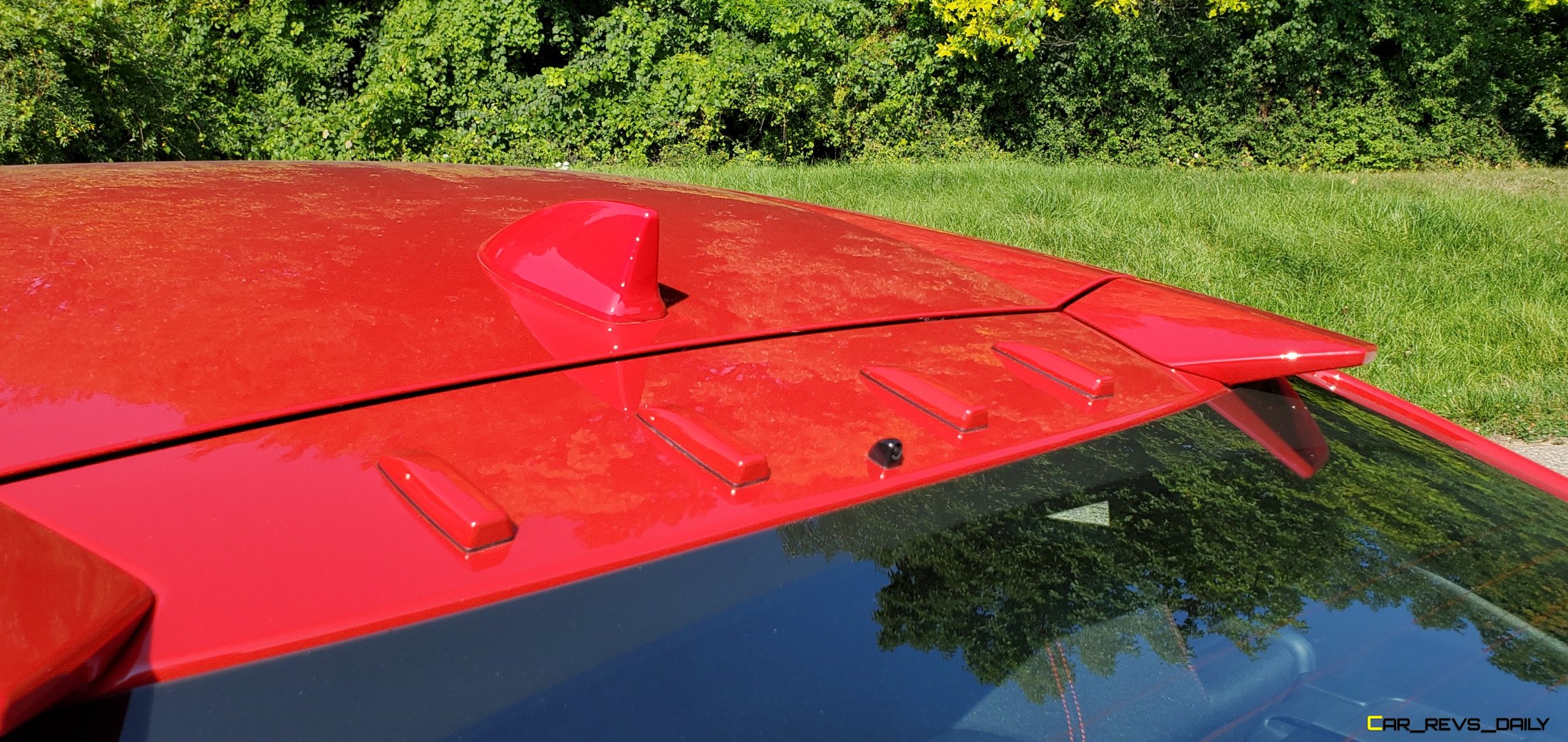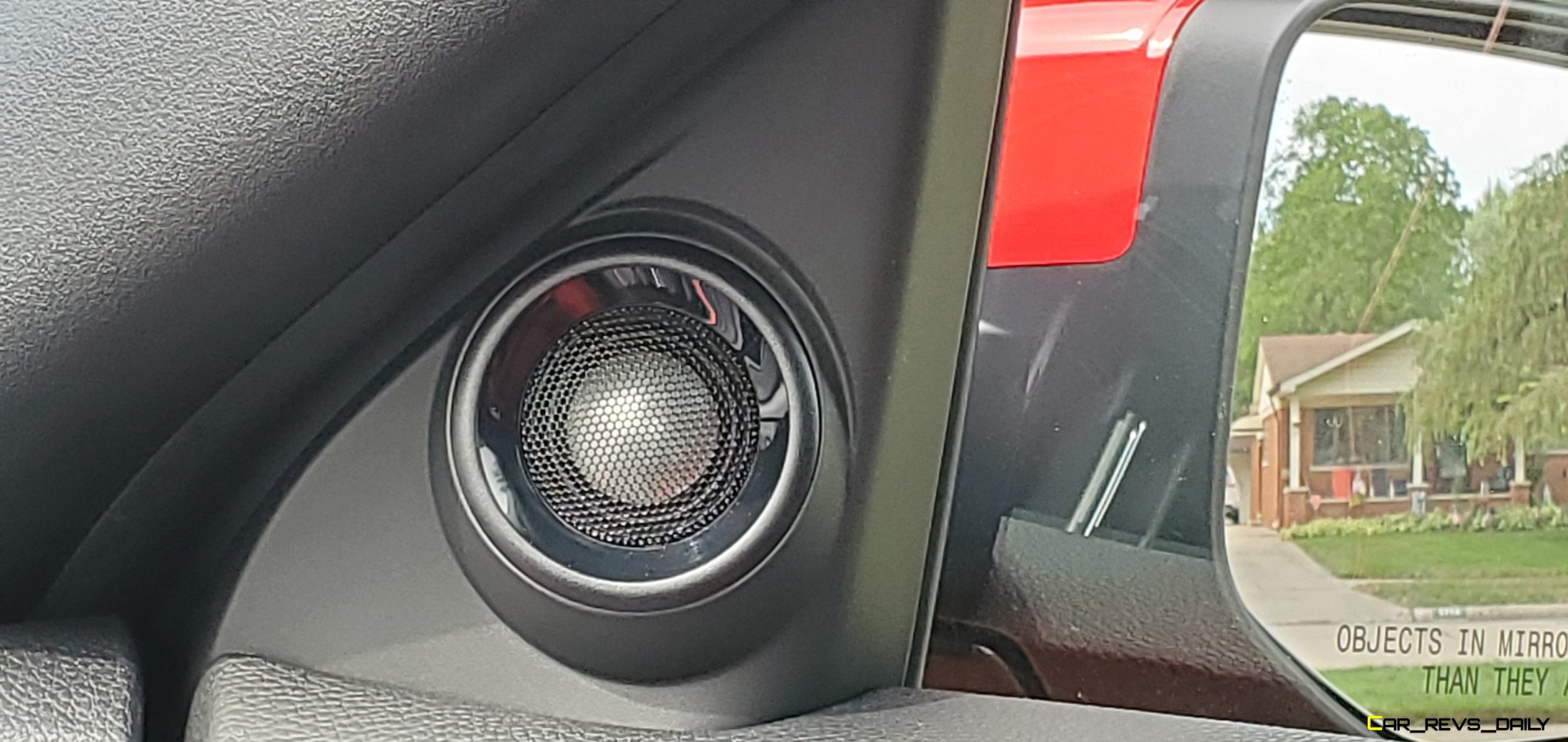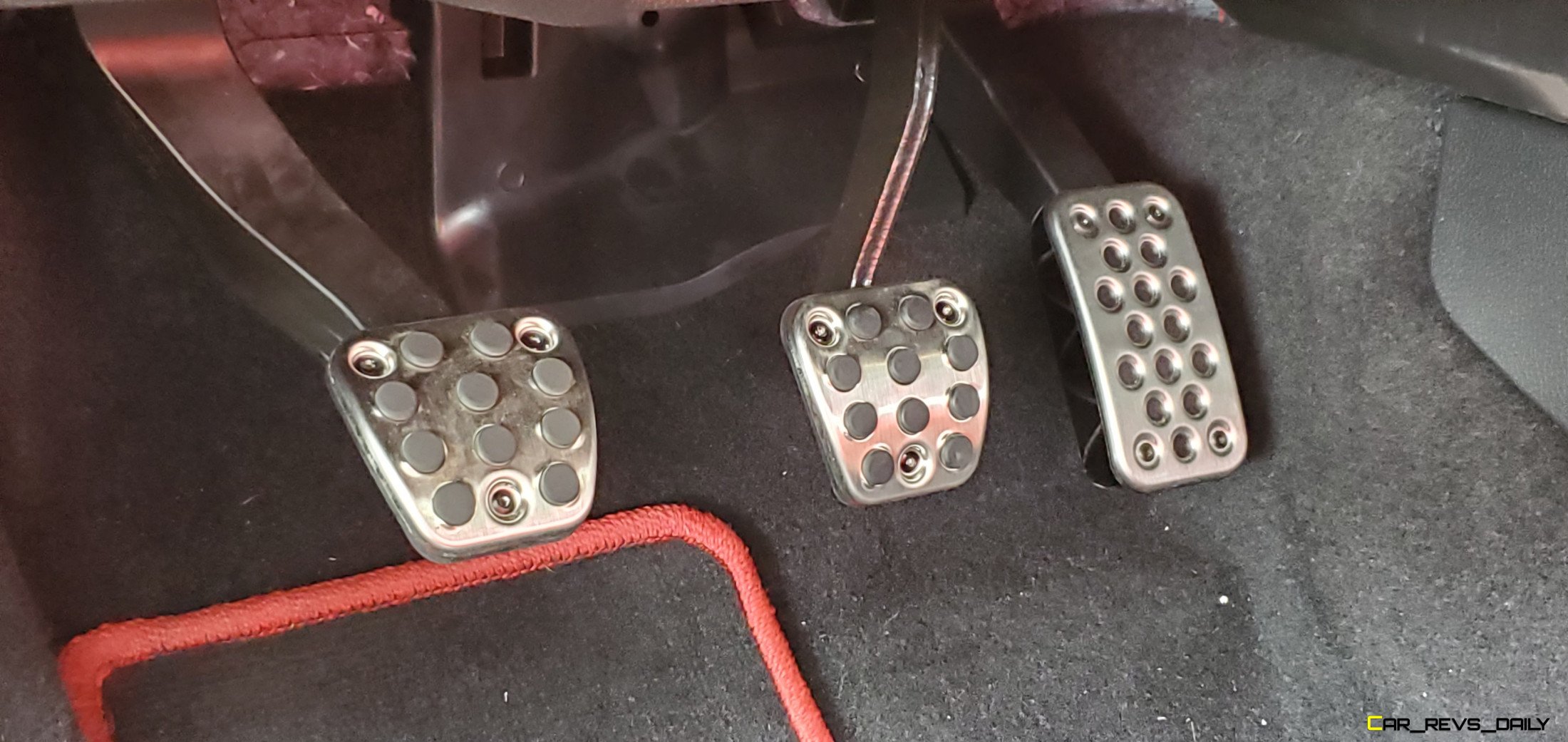The Honda Civic Si for the longest time has always been the de-facto top performance offering for Honda in the United States. But our friends across the pond always had access to something a bit spicier, the Type R. The long wait matched the level of our collective jealousy, but at long last the current generation Type R finally arrived to truly unify the performance car constellations. The Type R has had some time to cement its place in the performance car ranks, and Honda has added some minor updates to the hottest of all Civics for the 2021 model year. But is it all enough to help keep the love affair alive?
Subtle tweaks helps keep things fresh for Civic Type R
When looked at as a whole, you might be forgiven if you don’t notice much of a difference between a 2021 Type R, and its predecessor. The bulk of the styling still looks like it was grafted from the pages of a Japanese manga novel, with plenty of sharp creases, curves, and all kinds of protrusions aimed at enhancing its performance credentials. However, a closer look at our red hued tester reveals that Honda designers have made some subtle updates to the exterior in the name of enhancing function.
The freshened front fascia features a larger front grille opening as well as a larger radiator opening to help improve cooling to the engine. The rear fascia has also been subtly tweaked. This minimal amount of change should please fans that love the Type R’s assertive personality, and also allow the Type R to fend off the challenge of rivals. That includes the Hyundai Veloster N, as well as the revamped Volkswagen Golf R which will go on sale in the U.S. later this year. The rear spoiler looks very attractive, and unlike other rear wings, this one actually features a large gap which helps minimize the loss of rear vision.
Other goodies include attractive alloy wheels, mesh inserts for the grille, and even vortex generators on the roof. This is a very expressive Civic, and it actually got a few stares when we took it to Bollinger’s first ever Cars & Coffee event at the company’s new HQ in Oak Park, Michigan.
Race focused interior retains the core Type R essentials
The interior of the Type R is a purpose built place to spend time in. It might not be the fanciest interior out there, but it certainly tries its best to make a good first impression. Oh and you better like the color red, with Honda designers splashing the vibrant hue throughout the cabin. The cloth sport seats in our tester strike a very pleasing balance between supportive bolstering and long haul comfort. Plastic quality is a step behind the Golf R, but it is a welcome improvement over the Fischer Price plastics that define the Veloster N. The dashboard has a clean design, and Honda even slipped in some sharp looking faux carbon fiber accents.
All Type R’s are equipped with a six speed manual transmission, with the shifter being a solid metal piece. This shifter felt good in the hands (despite some pitting and wear from past track days) but like other shifters made this way, it can get a bit toasty when the hot sun has a chance to heat it up. The rest of the cabin is largely lifted from the Civic, which means that many controls and switches are placed in a very ergonomically friendly layout. The infotainment system’s software is still behind that of rivals, but the old touch based controls have been pitched for new physical buttons that helps alleviate some of the frustration that dogged the system. Many buttons and switches are within easy reach of occupants, and it’s very clear that the cabin has a very driver centric feel to it especially in the placement of key buttons.
2.0 liters of track focused terror
Performance for the 2021 Honda Civic still comes from the familiar 2.0 liter turbocharged four cylinder engine which is borrowed from the larger Accord sedan. As expected, Honda engineers have radically altered this engine, with our tester producing 306 horsepower and 295 lb-ft of torque. This is still a very impressive amount of muscle for a front wheel drive performance car and it proved to be a welcome distraction from the realities of a pandemic controlled world.
All Type R’s feature a six speed manual gearbox and the unit in our car delivered smooth and precise shifts. The Type R also comes with rev matching software which was a very welcome feature and allowed us to make better use of the engine’s powerband. The 2.0 liter is a very willing engine, and while it lacks noticeable low end torque it makes up for it by offering good amounts of thrust in the middle and higher portions of the rev band. This behavior makes it better than the Veloster N in this regard but the Golf R still has a bit of an edge here, with VW promising further improvements in the upcoming iteration of the Golf R.

A big change that experienced enthusiasts will notice are the updates that Honda has made to the adaptive suspension. Company reps claim that the suspension has had its sampling rates improved, with the new unit now processing inputs and making adjustments at 20 times per second versus the twice per second rating that once defined the older setup. An interesting way that this can be observed is when the Type R is allowed to cruise about in Comfort mode. The roads in Metro Detroit are the perfect testing range for ride quality and suspension feedback and even the most pockmarked of tarmac did little to disrupt the demeanor of this Civic. Larger holes though are best left alone to help preserve the spicy looking wheels and the thin side walled Continental SportContact 6 rubber.
Other improvements including selective stiffening of the front and rear suspension bushings and more rear toe-in geometry allow the Type R to further sharpen its game when the four door is thrown into sharp turns and backroad apexes. The steering wheel does a very good job of communicating to the driver and that trait is fast becoming a rarity as electrically operated steering racks become more complex. The Type R is in its element when the adaptive dampers are switched into Race mode. Here, the miniscule amounts of body roll melt away, and the Civic turns into a very responsive tool of track centric destruction. As expected, this particular mode does up firmness slightly, but its not as punishing as say some of its rivals, and its still maintains a fair degree of comfort.
Value Quotient

Pricing has always been a key hallmark for the Civic lineup, and in the case of the Type R, simplicity plays a role here too. Buyers that make the trip to Honda’s build configurator will have two models to choose from with a base Type R starting at $37,495. Meanwhile the range topping Limited Edition (a limited production run that’s only available for 2021) serves as the temporary range topping model with pricing for those starting at $43,995.
Our lightly optioned tester only came with a light sprinkling of extras with the $3,673 carbon fiber package being the most prominent offender. Adding this package to what was already present caused the final sticker to jump just over $41,000. This is significantly more expensive then a base $32,250 Hyundai Veloster N, but the Type R is more powerful than the GTI Autobahn with the price difference between the two being rather small. The reason why we’re referencing the GTI here is because VW removed the current generation Golf R from its configurator a short while ago in preparation for the arrival of the 2022 model.
When the 2022 Golf R eventually makes its appearance in dealerships the Civic Type R will have more of a fight on its hands. The R will have a nine horsepower advantage over the Honda and the R will also bring a number of new features to the table. This includes a Drift mode, as well as revised performance add-ons. However, the R is also projected to be the most expensive in its shrinking segment and that could give the Civic an opportunity to steal customers that want to satiate their need for speed, but at a less costlier price of entry.
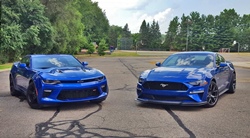
Carl Malek has been an automotive journalist for over 10 years. First starting out as a freelance photographer before making the transition to writing during college, his work has appeared on numerous automotive forums as well as websites such as Autoshopper.com.
Carl is also a big fan of British vehicles with the bulk of his devotion going to the Morgan Motor Company as well as offerings from Lotus, MG, and Caterham. When he is not writing about automobiles, Carl enjoys spending time with his family and friends in the Metro Detroit area, as well as spending time with his adorable pets.


